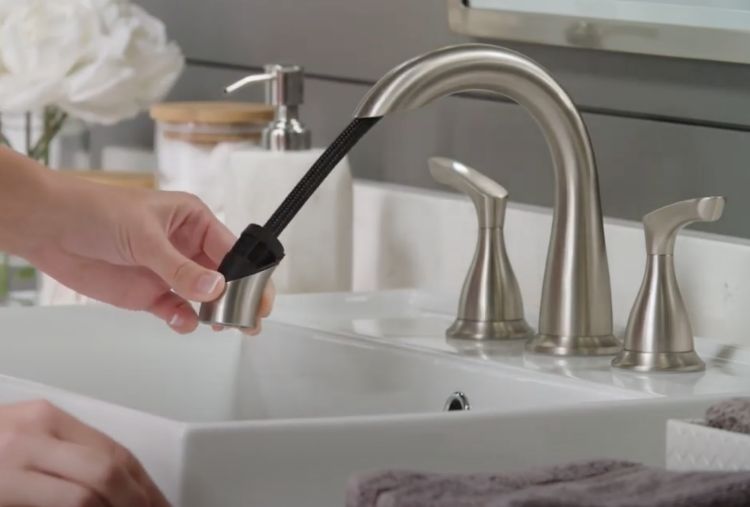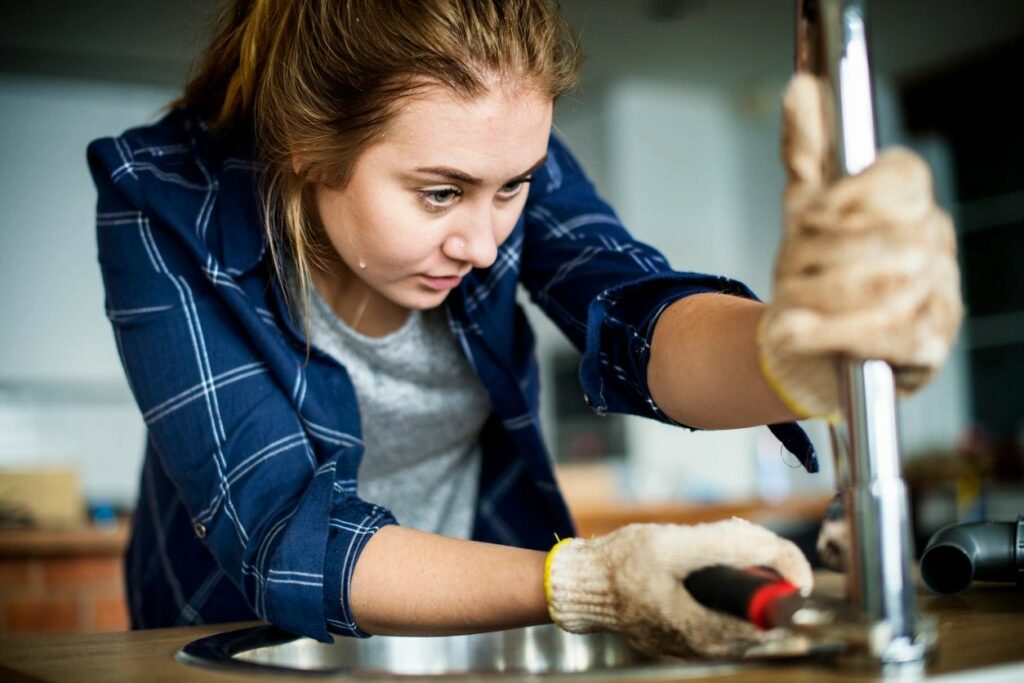What are your ideas concerning What Causes Leaky Faucets & How To Fix Them?

Dripping faucets might look like a minor hassle, but their impact surpasses simply the nuisance of the noise. From drainage to sustaining unneeded economic costs and health and wellness dangers, overlooking a dripping faucet can result in various effects. In this post, we'll delve into why it's essential to resolve this common house problem promptly and successfully.
Wastage of Water
Environmental Effect
Dripping faucets add substantially to water wastefulness. According to the Environmental Protection Agency (EPA), a solitary tap dripping at one drip per secondly can throw away greater than 3,000 gallons of water per year. This not only stress water sources but additionally impacts ecological communities and wildlife depending on them.
Financial Expenses
Boosted Water Costs
Beyond the environmental impact, leaking taps can blow up water costs considerably. The accumulated wastage over time translates right into greater energy costs, which could have been avoided with prompt repair services.
Prospective Residential Property Damages
Furthermore, prolonged trickling can result in damage to components and surfaces bordering the faucet. Water build-up can cause discoloration, corrosion, and also structural concerns if left ignored, causing extra fixing expenses.
Wellness Problems
Mold and Mold Growth
The continuous existence of wetness from a trickling tap creates an excellent atmosphere for mold and mildew development. These fungi not only jeopardize interior air top quality however likewise pose health risks, especially for people with respiratory system conditions or allergies.
Waterborne Diseases
Stationary water in leaking taps can end up being a breeding place for germs and various other microorganisms, enhancing the risk of waterborne diseases. Pollutants such as Legionella germs flourish in stagnant water, potentially leading to significant ailments when consumed or inhaled.
Do it yourself vs. Expert Repair work
Pros and Cons of DIY Repair Work
While some may attempt to deal with a dripping tap themselves, DIY fixings include their very own set of difficulties. Without proper expertise and devices, do it yourself attempts can worsen the issue or result in insufficient repairs, extending the issue.
Advantages of Working With an Expert Plumber
Working with a specialist plumber ensures that the underlying source of the leaking tap is addressed efficiently. Plumbing professionals possess the know-how and devices to diagnose and fix tap issues effectively, conserving time and minimizing the risk of additional damage.
Step-by-Step Overview to Repairing a Dripping Faucet
Tools Required
Prior to trying to fix a dripping faucet, gather the required tools, including an adjustable wrench, screwdrivers, replacement components (such as washing machines or cartridges), and plumber's tape.
Typical Faucet Issues and Their Solutions
Determine the type of tap and the details concern triggering the drip. Common problems consist of damaged washers, rusty shutoff seats, or defective O-rings. Refer to producer guidelines or on-line tutorials for step-by-step advice on repairs.
Safety nets
Regular Upkeep Tips
To avoid dripping taps, perform regular maintenance such as cleaning aerators, evaluating for leaks, and changing worn-out parts without delay. Additionally, take into consideration installing water-saving gadgets or updating to more effective components.
Relevance of Prompt Fixes
Addressing trickling faucets as soon as they're discovered stops further water wastage and potential damage, eventually conserving both water and cash in the long run.
Influence On Home Value
Understanding of Well-Maintained Residential Property
Preserving a building in good condition, consisting of resolving upkeep issues like dripping taps, improves its perceived worth and charm among potential customers or occupants.
Influence on Resale Worth
Qualities with well-kept plumbing components, including taps, command higher resale worths in the realty market. Addressing leaking taps can add to a positive impact during residential property evaluations and settlements.
Environmental Obligation
Private Payment to Conservation
Taking obligation for dealing with dripping taps straightens with broader efforts toward water preservation and ecological sustainability. Every person's activities jointly make a significant impact on preserving valuable resources.
Sustainable Living Practices
By prioritizing punctual fixings and taking on water-saving habits, individuals add to lasting living techniques that profit both existing and future generations.
Verdict
Resolving a leaking faucet goes beyond simple benefit; it's a vital step towards preserving water, minimizing financial prices, and securing health and wellness and home. Whether through do it yourself repair work or specialist support, acting to deal with leaking faucets is a little yet impactful way to advertise responsible stewardship of resources and add to a healthier, a lot more lasting future.
How to Fix a Leaky Faucet: Step-by-Step Repair Guide
A leaky faucet may seem like a simple annoyance, but if it's not fixed promptly, that leak could cost hundreds to potentially thousands. From water damage to mold, mildew, and high water bills, even a tiny leak can be catastrophic if left unattended. Damage like this can even affect the overall value of your home, so it's important to take the right approach for leaky faucet repair. You may need the help of a plumber in some cases, but we've got a few tips you can try on how to fix a leaky faucet before calling the pros.
Four Faucet Types
When you're learning how to fix a leaky faucet, the first step is knowing what kind of faucet you're working with! There are four common types.
Cartridge Faucets
Cartridge faucets come in one- or two-handled varieties. In one-handled cartridge faucets, hot and cold water combines in a single cartridge. In the two-handled versions, hot and cold water are controlled separately and mixed in the faucet.
Ball Faucets
Ball faucets have a single lever you push up and down to adjust the pressure and rotate to change the temperature. A slotted metal ball controls the amount of water allowed into the spout.
Compression Washer Faucets
They're the oldest type of faucet, but they're still used in many homes — especially older ones. Compression faucets have two separate handles that, when turned, raise or lower the washer that seals a water valve. This valve stops water from flowing through the faucet when it is turned off.
Disc Faucets
Disc faucets rarely need to be repaired due to their maintenance-free design. The water flow is controlled by two discs — the upper one raises and lowers against a fixed lower disc, creating a watertight seal. If your disc faucet starts leaking, you may need to replace the seals or clean residue buildup from the inlets.
Fixing a Leaky Faucet
Step 1: Turn Off the Water
Whether you're learning how to fix a leaky bathtub faucet or how to fix a leaky kitchen faucet, always turn off the water supply to your working area when you're fixing a leak. The last thing you want is a flood added to your list of things to fix.
Look for the shutoff valves below your sink or around the tub and turn them clockwise to stop the water flow. If your faucet doesn't have shutoff valves, you may need to turn off the water for the whole house. Check to make sure it's off by turning the faucet on. If nothing comes out, you're ready to start the repair.
Step 2: Take Apart the Faucet
How you disassemble your faucet depends on the type of fixture you have. You can use a flathead screwdriver to remove the caps on top of the handle or handles for cartridge and compression faucets. Inside, you should see handle screws. Unscrew these with a screwdriver to remove the handle.
Disc- and ball-style faucets will typically have an inlet screw near the handle, and removing that will reveal the interior of the faucet.
Detach the Valve Stem
For cartridge- and compression-style faucets, you'll see the inner valve stem or cartridge once you remove the faucet handles. If you have a compression faucet, unscrew the brass valve stem. If you have a cartridge faucet, pull out the cartridge. If your cartridge has been in place for a while, it may require some tools or extra force to remove it due to mineral deposits.
Examine and Replace Parts
Once you've removed the parts, check them out to confirm what needs to be replaced. You may see corroded rubber washers, O-rings, stems, or cartridges. On a ball-style faucet, check the seats and springs for damage.
If you need to repair a leaky disc faucet, check the inlet and seals on the lower disc.
Once you determine what parts must be replaced, visit your local hardware store. Bring the damaged parts with you to ensure you can purchase the correct components to replace them.
Clean Valves and Faucet Cavity
If you've removed a stem or cartridge, you may notice mineral buildup in the faucet's threads. Use white vinegar to clean the valve seat by soaking it for a few minutes, then scrub it away with a soft toothbrush and rinse with warm water. You can also clean the interior of the faucet in the same way.
Reassemble the Faucet
Once your faucet is cleaned and the required parts have been replaced, it's time to reassemble it. Put the pieces back together and slowly turn the water supply back on. Doing this slowly is crucial because too much initial water pressure can damage the new hardware you've just installed.
https://homewarranty.firstam.com/blog/how-to-fix-leaky-faucet

Do you like more info about Why Is It Important To Fix Your Leaking Tap/Faucet?? Write a remark directly below. We would be glad to know your responses about this blog posting. We are looking forward that you visit us again in the near future. Sharing is good. You never know, you might be doing someone a favor. Many thanks for taking the time to read it.